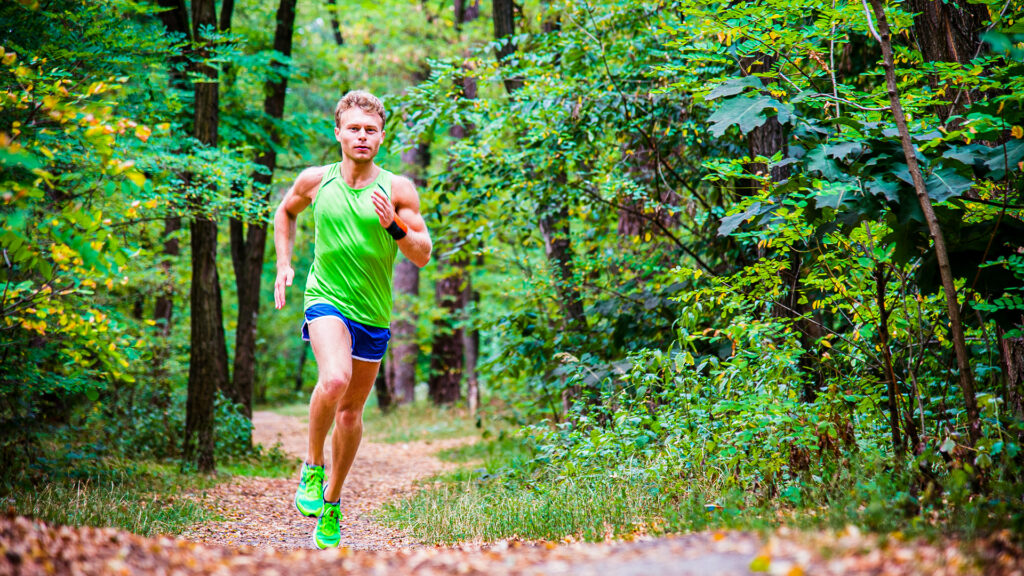Trail running has gained immense popularity in recent years, attracting individuals from various walks of life. With its blend of adventure, connection with nature, and physical challenge, it’s no wonder that people have fallen in love with this exhilarating sport. In this article, we will delve into the reasons why trail running has captured the hearts of so many enthusiasts around the world.
Why Do People Love Trail Running?
Trail running offers a unique experience that sets it apart from traditional road running. Let’s explore the factors that make trail running so appealing.
1. Connecting with Nature
Trail running provides a remarkable opportunity to immerse oneself in nature’s splendor. Unlike running on paved roads, trail runners find themselves surrounded by lush forests, towering mountains, babbling streams, and breathtaking vistas. This connection with nature offers a refreshing escape from the hustle and bustle of everyday life, allowing runners to find solace and rejuvenation on the trails.
2. Adventure and Exploration
Trail running is an adventure waiting to unfold, with every run presenting new challenges and discoveries. The uncertainty of what lies ahead fuels the excitement and keeps runners engaged. Exploring new trails, conquering rugged terrain, and navigating through obstacles create a sense of thrill and accomplishment. Each trail run becomes a unique adventure, spurring the love for trail running.
3. Mental and Emotional Benefits
Trail running is not just a physical endeavor; it also provides profound mental and emotional benefits. The serene environment of the trails promotes mindfulness, allowing runners to disconnect from the stress of daily life. The rhythmic footfalls and natural surroundings help clear the mind, reduce anxiety, and improve overall well-being. Trail running acts as a therapeutic outlet, offering a respite from the pressures of modern living.
4. Varied Terrain and Challenges
Trail running appeals to individuals seeking a dynamic and engaging workout. Unlike monotonous road running, trail running exposes runners to a myriad of terrains, including steep inclines, descents, rocky paths, and uneven surfaces. Negotiating these challenges engages different muscle groups, providing a full-body workout. The ever-changing terrain keeps runners mentally alert, enhancing focus, balance, and agility.
5. Sense of Freedom
Trail running provides a sense of liberation and freedom that is hard to replicate in any other sport. The absence of traffic, concrete, and crowded streets allows runners to experience a genuine sense of freedom. Trail runners can fully embrace the environment, exploring at their own pace and connecting with their surroundings without constraints. This freedom fosters a deep appreciation for the simplicity and beauty of nature.
6. Community and Camaraderie
Trail running cultivates a strong sense of community and camaraderie among its participants. Trail runners often come together at races, group runs, or online communities, forming lasting friendships and support networks. The shared experiences, challenges, and triumphs create a bond that transcends the sport itself. The trail running community is known for its inclusiveness and encouragement, providing a supportive environment for runners of all abilities.

FAQs about Trail Running
Here are some frequently asked questions about trail running:
1. Is trail running suitable for beginners?
Absolutely! Trail running welcomes individuals of all fitness levels. It’s important to start with beginner-friendly trails, gradually increasing the difficulty as your fitness improves. Proper footwear and pacing are key to a safe and enjoyable experience.
2. Are there any safety precautions for trail running?
Safety is paramount in trail running. It is crucial to be prepared with the right gear, such as trail shoes, navigation tools, and sufficient hydration. Additionally, informing others about your running plans and being aware of potential hazards, such as wildlife.
3. Is trail running harder than street running?
Trail running can be more challenging than street running due to the varying terrain and elevation changes. The uneven surfaces, steep inclines, and technical obstacles require additional effort and engage different muscle groups. However, the intensity of the run ultimately depends on the specific trail and the runner’s fitness level.
4. Is trail running harder on the body?
Trail running can be more demanding on the body compared to street running. The uneven surfaces and constant adjustments to the terrain place greater stress on the muscles, joints, and stabilizing muscles. However, this also means that trail running can help strengthen these areas over time. It’s essential to gradually increase the intensity of trail runs and listen to your body to avoid injuries.
5. Is it safe to trail run alone?
Trail running alone can be safe if certain precautions are taken. It’s important to choose well-marked and popular trails, inform someone about your running plans and estimated return time, carry a cell phone for emergencies, and be aware of your surroundings. It’s also beneficial to have basic first aid knowledge and carry essential safety items like a whistle, a map or GPS device, and extra hydration.
6. How do you trail run without falling?
Trail running presents challenges that may increase the risk of falling. Here are some tips to help you navigate the trails safely:
- Choose the right footwear: Invest in trail running shoes that provide excellent traction and stability on uneven surfaces.
- Maintain an upright posture: Keep your torso upright and your gaze ahead to anticipate any obstacles or changes in terrain.
- Shorten your stride: Take smaller steps to maintain better control and stability, especially on steep descents or technical sections.
- Use your arms: Engage your arms for balance and stability, allowing them to naturally counterbalance your movements.
- Pay attention to the trail: Stay focused on the path ahead, scanning for rocks, roots, or other potential hazards.
- Practice trail-specific skills: Gradually develop your trail running skills, including navigating obstacles, descending steep hills, and running on different types of terrain.
7. How to get better at trail running?
To improve your trail running skills and performance, consider the following tips:
- Gradual progression: Start with beginner-friendly trails and gradually increase the difficulty and distance as your fitness and confidence grow.
- Strength and flexibility training: Incorporate strength and flexibility exercises into your training routine to enhance overall stability and resilience.
- Hill and interval training: Include hill workouts and interval training sessions to build strength, endurance, and speed on challenging terrain.
- Practice technical skills: Dedicate time to practicing technical skills such as navigating roots, rocks, and steep descents.
- Cross-training: Engage in cross-training activities like hiking, cycling, or strength training to complement your trail running and work on different muscle groups.
- Join a running group or community: Running with others can provide motivation, accountability, and the opportunity to learn from more experienced trail runners.
Conclusion
Trail running has captured the hearts of countless individuals due to its unique blend of adventure, connection with nature, and physical challenges. The opportunity to immerse oneself in nature, the sense of exploration and freedom, and the mental and emotional benefits make trail running an incredibly rewarding activity. With the right precautions, trail running can be enjoyed by runners of all levels, providing a path to self-discovery, personal growth, and a thriving community. Lace up your shoes, hit the trails, and experience the joy and wonder of trail running for yourself!


Recent Comments